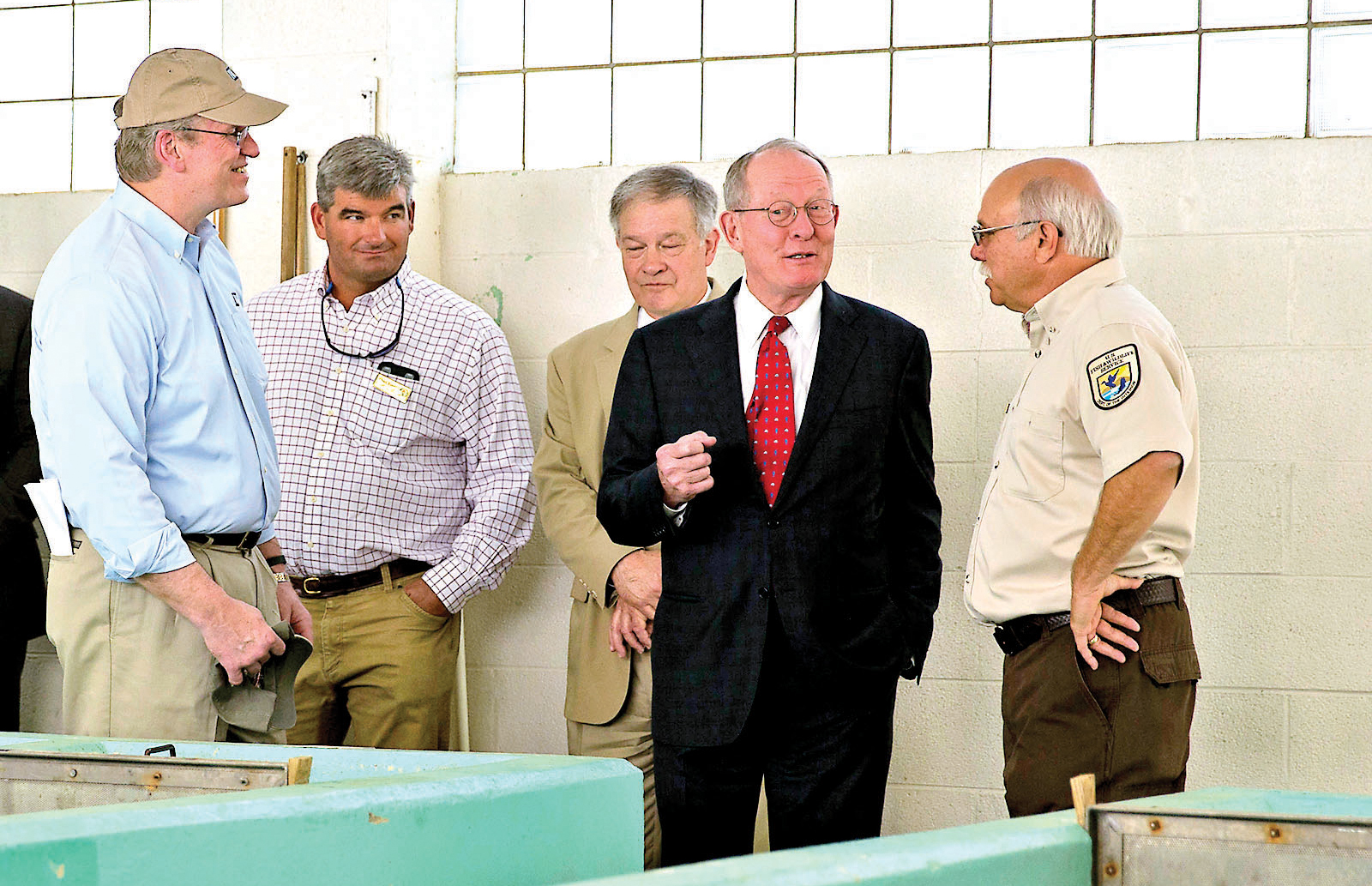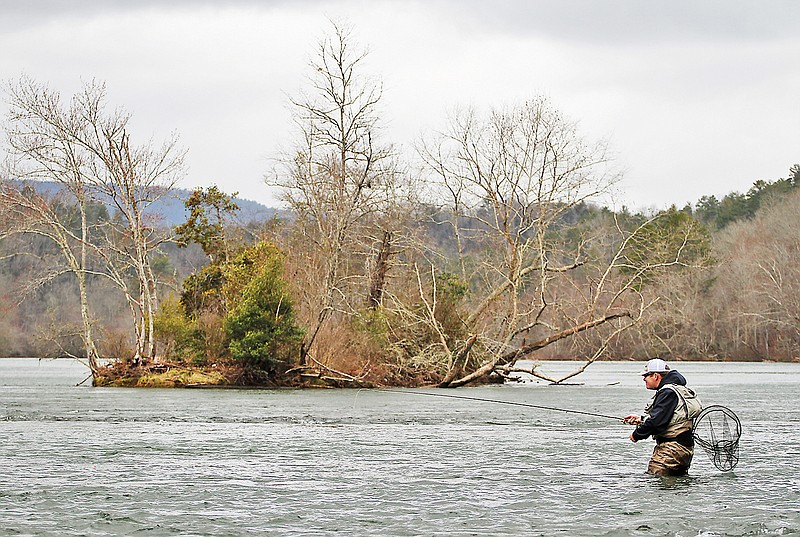Anglers of the Southeast rejoice.
Federal and state officials agreed Monday to keep funding flowing to three federal recreational trout fisheries in Tennessee and Georgia that provide more than 1 million rainbow or brown trout to water bodies near 13 TVA dams across seven southern states.
The agreement will keep the Elk Hair lures flying and the Wooly Buggers floating for fishermen across all of Tennessee and parts of Alabama, Georgia, Kentucky, Mississippi, North Carolina and Virginia.
And more than 256,000 of those trout anglers come to Tennessee and Georgia each year, according to the U.S. Fish and Wildlife Service.
Starting next year, the Tennessee Valley Authority, U.S. Fish and Wildlife Service and state natural resource agencies in Tennessee and Georgia will split the $906,000 annual burden of running recreational fisheries in Erwin, Tenn., Celina, Tenn. and Suches, Ga.
State and federal budget cuts over the last several years had endangered funding of the fisheries.
Steve Fry, president of the Chattanooga chapter of Trout Unlimited, a nonprofit fisheries conservation organization, said the agreement is great news for anglers and communities in the region. The organization was among several interest groups involved in the agreement.
"We want to maintain these trout fisheries. They have a big economic impact for the areas where they are located," Fry said. "It's been trying to get all the different agencies -- state and federal -- to come together and work with a plan to keep everything maintained."
The fisheries are purely recreational. The fish are stocked into cooler reservoir waters where they otherwise wouldn't appear. And they are fed into waters that prohibit their natural reproduction, according to the federal wildlife service.
 Bill Johnson, TVA president and CEO, and Sen. Lamar Alexander tour the Erwin National Fish Hatchery following the announcement Monday of the multi-agency funding agreement that will keep Erwin and two other federal hatcheries operating. Alan Brown of U.S. Fish and Wildlife Service explains the hatchery operations to Johnson and Alexander.
Bill Johnson, TVA president and CEO, and Sen. Lamar Alexander tour the Erwin National Fish Hatchery following the announcement Monday of the multi-agency funding agreement that will keep Erwin and two other federal hatcheries operating. Alan Brown of U.S. Fish and Wildlife Service explains the hatchery operations to Johnson and Alexander.But they can be fished -- and that's a big industry.
The wildlife service says the fisheries generate about $45 million in economic activity annually. And every dollar spent specifically on fish production and stocking generates $73 in overall impact.
The new agreement is basically an extension of a current three-year funding plan that is set to expire in 2016. TVA will pick up the bulk of the fish stock, while U.S. Fish and Wildlife Service will fund maintenance and and infrastructure costs. State natural resource agencies in Tennessee and Georgia will be responsible for distributing and monitoring the fish.
U.S. Sen. Lamar Alexander, who is chairman of the Senate appropriations subcommittee on Energy and Water Development and sits on the body's Energy and Natural Resource Committee, helped to negotiate the current three-year fix and Monday's "permanent" solution.
"Nearly 900,000 Tennesseans and visitors buy fishing and hunting licenses each year," Alexander said. "This means that the federal fish hatcheries in Erwin, Dale Hollow and Georgia will continue to provide each year to Tennessee rivers and lakes the more than 1 million fish that make our trout fishing some of the best in the country."
TVA President and CEO Bill Johnson said supporting fisheries was ultimately part of the authority's mission.
"We have a mission to provide environmental stewardship and a goal of enhancing the quality of life in the Tennessee Valley through recreational opportunities and economic development," Johnson said.
The authority has spent an estimated $60 million on capital improvements to support fish habitats at its dams over the last 25 years. And at the same time it has worked to improve water quality and fish habitats, according to a multi-agency statement released Monday.
Officials with the federal wildlife service, the Tennessee Wildlife Resources Agency and the Georgia Department of Natural Resources praised the Monday agreement. Without it, they said, states would not be able to keep the hatcheries going.
Contact staff writer Louie Brogdon at lbrog don@timesfreepress.com, @glbrogdoniv on Twitter or at 423-757-6481.
